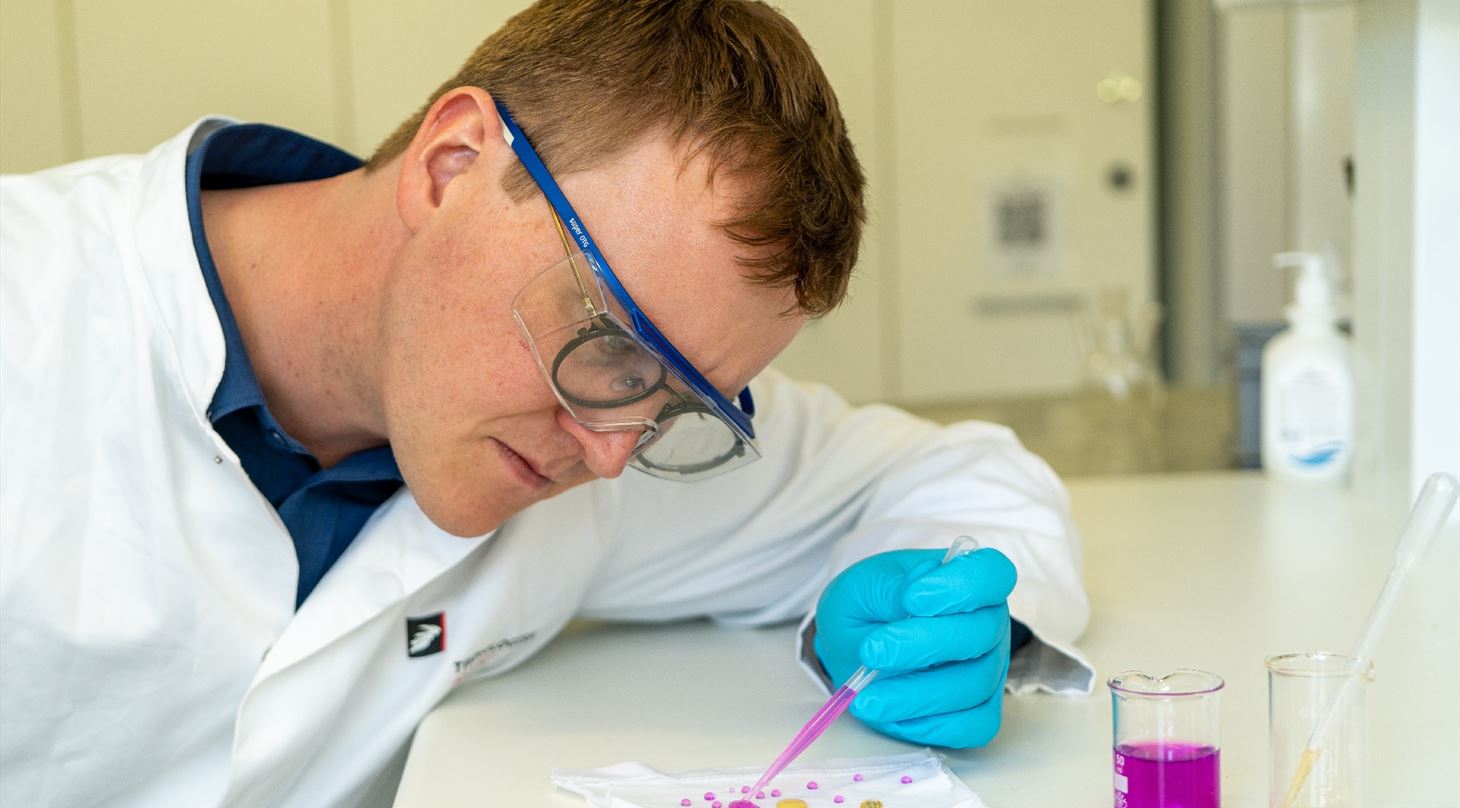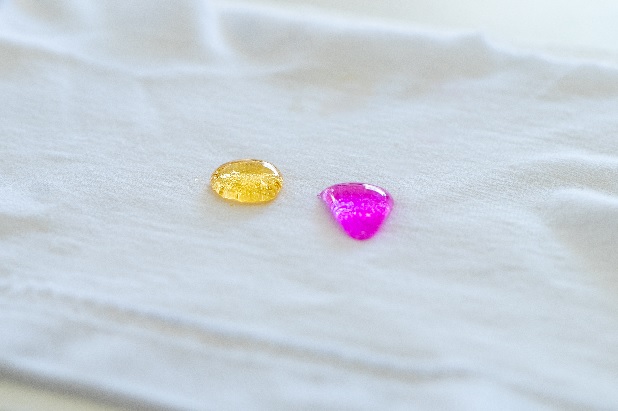
New collaboration to develop PFAS-Free textile proofing
Press release published on 5th September 2024.
In the future, clothing, shoes, and furniture will be able to be impregnated effectively without the use of PFAS.
The Danish Parliament has just signed an agreement to ban PFAS in clothing, shoes, and furniture from 1 July 2026. However, current alternatives to PFAS impregnation do not protect textiles as effectively. Therefore, specialists and industry players will now develop a new solution that could potentially impact the phasing out of PFAS in other industries and future regulations.
Significant PFAS emissions from textiles
Danish Technological Institute and impregnation supplier Guardian Protection Products A/S have joined forces to develop a PFAS-free impregnation spray that will effectively protect textiles against water, grease, and dirt. The project is supported by MUDP under the Ministry of the Environment.
According to figures from the European Chemicals Agency, the solution can have major environmental benefits. The textile industry accounts for as much as 60 per cent of the PFAS emissions that come from the use phase, for example, when washing clothes. Therefore, both authorities and consumers are pushing for PFAS-free alternatives, and the Danish Parliament has just agreed on a national ban on PFAS in clothing, shoes, and impregnating agents as of 1 July 2026.
"For companies, this means that they will soon need to find good alternatives to PFAS to future-proof their business. PFAS in waterproofing has unique protective properties, so we need to think outside the box to find something that works just as well. But if we succeed, it opens up both major environmental benefits and business opportunities," says consultant Emil Damgaard-Møller from the Danish Technological Institute.
He also points out that the Danish ban is the first step towards a broader ban on PFAS, which has already been proposed in the EU. This will affect all the many industries that use PFAS in products and production processes.
PFAS-free textile proofing in two years
Over the next two years, the Danish Technological Institute will investigate the market for substances that can potentially replace PFAS in textile proofing, combined with testing and development work in laboratories. At the end of the project, a PFAS-free proofing agent will be ready to be evaluated.
"We have been actively working to remove PFAS from all our products in recent years and now only need one more product to fulfil this mission, which we expect to complete within the next few months. However, the PFAS-free alternatives available today are not as effective. So if we, together with the Danish Technological Institute, can develop a more gentle product with the same protective properties as PFAS, it would be a dream scenario that could have a significant impact on our market position in the long term," says Anders Skovbølling, CEO of Guardian.

A PFAS-free impregnation spray will be developed to protect textiles effectively against water, grease, and dirt, just as PFAS can do today. The fabric here is impregnated with PFAS, where it repels the yellow oil and red coloured water. Photo: Danish Technological Institute.
Silicone is not the solution
Silicone-based impregnation is increasingly being used as a replacement for PFAS. However, silicone only protects well against water and to a lesser extent against grease and dirt. In addition, many types of silicone also have a negative environmental impact.
"Like PFAS, silicone is a resistant substance that only slowly degrades in the environment. Therefore, we want to develop a real alternative to PFAS, i.e. without the environmentally harmful properties that we see the consequences of now with PFAS," says Emil Damgaard-Møller.
A PFAS-free impregnation spray can potentially contribute to phasing out PFAS in industries other than the clothing and furniture industry, and it can also give the authorities a better basis for regulating the use of unwanted chemicals.
The project Future Textile Proofing is supported by MUDP under the Ministry of the Environment.
Facts about PFAS
It is estimated that the textile industry in the EU uses 92,000 tonnes of PFAS annually, which corresponds to 10 percent of the total consumption of PFAS in the EU. However, PFAS in textiles wear off during use and washing, and much of the PFAS used is therefore discharged directly into nature. It is estimated that 23,000 tonnes of PFAS are released annually in the EU from textiles alone, which is 60 percent of all PFAS that ends up in nature annually from the use phase.
In 2020, Denmark introduced a ban on the use of PFAS in food contact materials such as baking paper, popcorn bags, and pizza boxes, and as of 1 July 2026, it will also apply to clothing, shoes, and furniture. Denmark and four other countries have proposed a general PFAS ban in the EU. At the EU level, the use of certain PFAS substances is regulated in the POPs Regulation and the REACH Regulation.
PFAS is a collective term for approximately 12,000 different synthetic fluorinated substances. What they have in common is that they are difficult to break down and therefore accumulate in animals and humans, where they are suspected of having a number of adverse health effects.
(Source: The Danish Ministry of Environment and The European Chemicals Agency)
Press Contact
- Senior Communications Consultant René Wad Andersen, Danish Technological Institute, mobile +45 72 20 14 71, email: rea@teknologisk.dk.
Professional Contact
- Consultant Emil Damgaard-Møller, PhD, Danish Technological Institute, mobile +45 72 20 16 26, email: edmo@teknologisk.dk.
Top Image: PFAS in waterproofing has unique protective properties, so we need to think outside the box to find something that works just as well. But if we succeed, it will open up both major environmental benefits and business opportunities, says consultant Emil Damgaard-Møller from the Danish Technological Institute. Photo: Danish Technological Institute